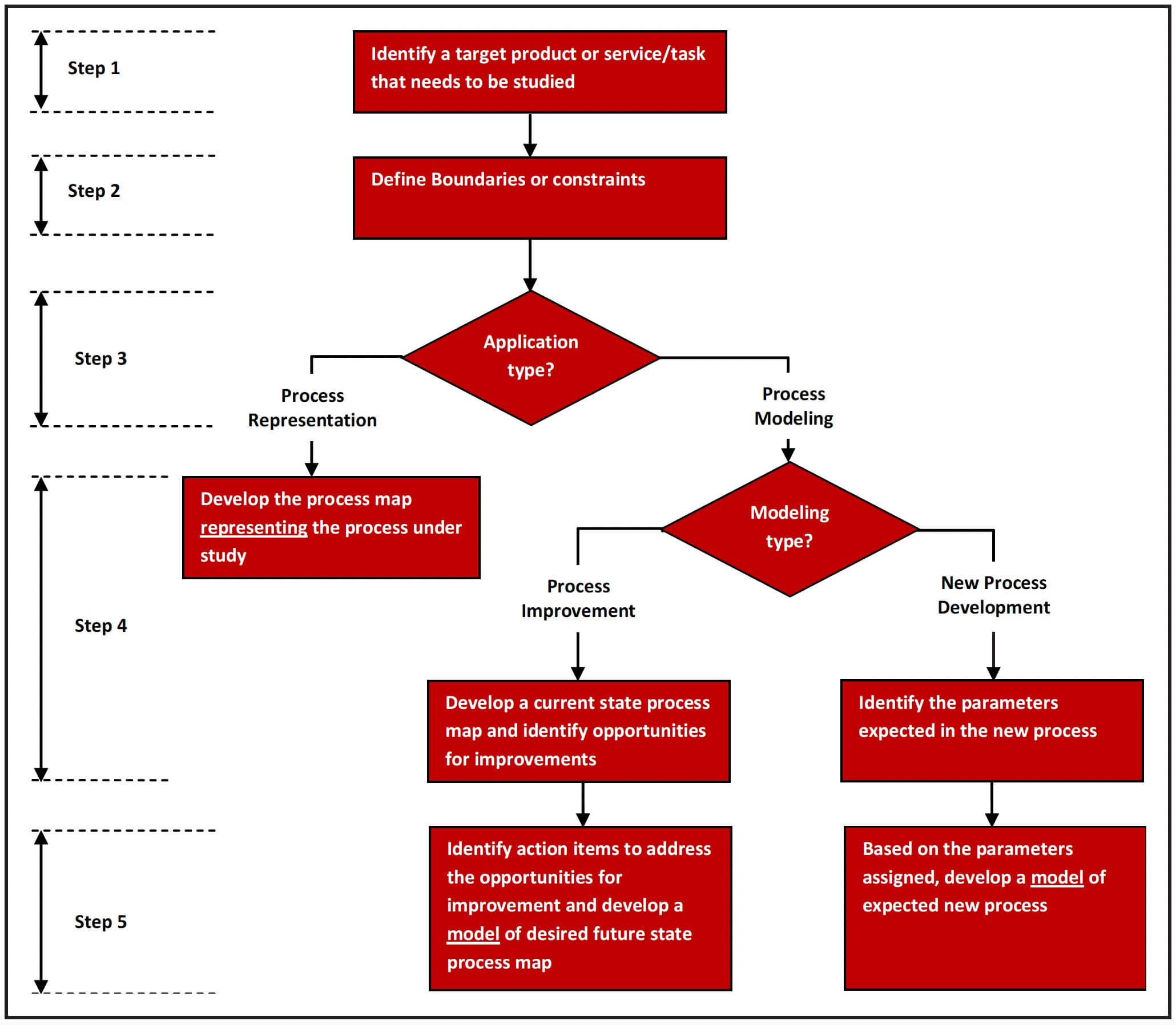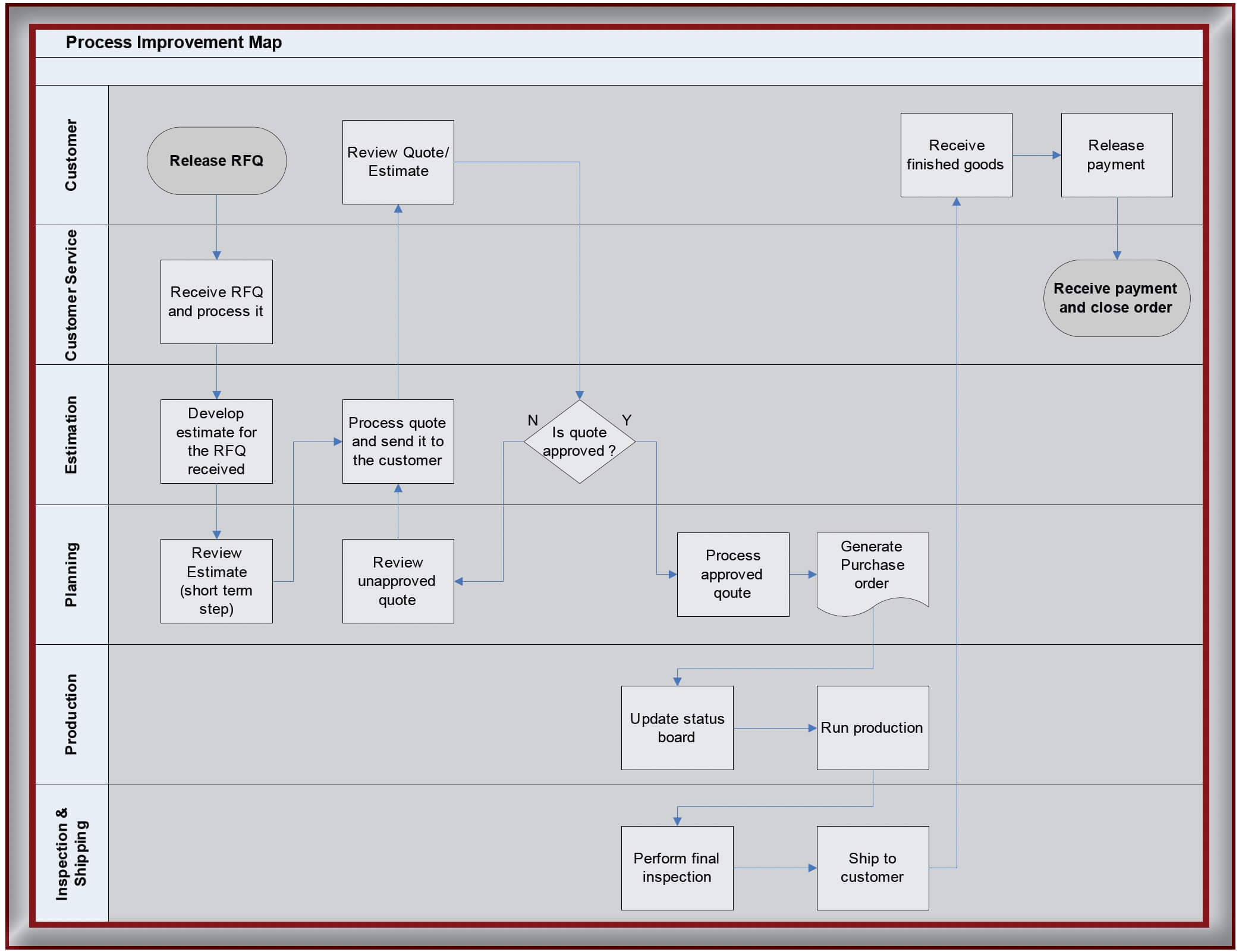Process Mapping is an activity to create a systematic, visual representation of activities involved in producing an outcome.
These outcomes could be building a product, delivering a service, defining internal procedures, etc. Process Mapping activity has two applications: a) Process Representation and b) Process Modeling. If all the parameters in a process are defined, the mapping activity is used for process representation. If an existing process needs to be improved or a new process needs to be defined, then Process Mapping activity is used for process modeling.
Generally, the end result of a process mapping activity is a set of current and future state process maps, depicting opportunities for improvement in the current state map. Typically, an action plan that depicts the roadmap of improvement activities is also developed to bridge the gap between the current and future state. In most cases, we also measure cycle times of individual processes/steps and calculate the overall lead time of the process being mapped. The future state process map is the desired state map focused on meeting customer requirements and making both internal and external operations efficient. The following chart is an example of a process map that was developed to identify opportunities for improvement.
Benefits
- Assists in initiation and support of the continuous improvement process
- Provides visual depiction of the process flows
- Provides opportunity to channel efforts towards processes that require immediate attention
- Reduced lead time and improved on-time delivery
- Tool to assist in developing standard work procedures
- Identification and elimination of non-value added activity/waste
- Freed-up capacity and improved inventory turnover
- Improved process and product quality
- Balanced work schedule and responsibilities




